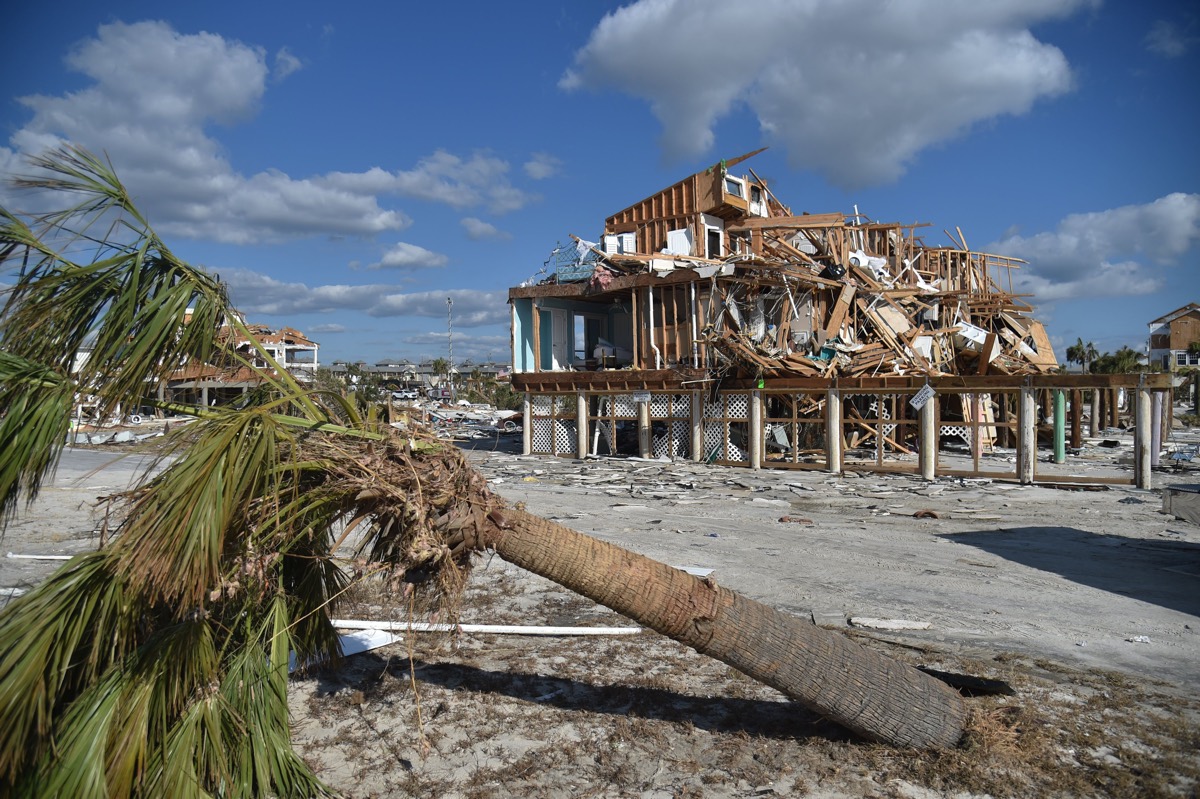The Atlantic May See Up to 4 Major Hurricanes This Season, New Forecast Says

Scientists are predicting a near-normal Atlantic hurricane season this year, with two to four major hurricanes reaching at least Category 3 status, with winds of 111 mph (178 km/h) or higher, the National Oceanic and Atmospheric Administration (NOAA) announced today (May 23).
But this "near-normal" description doesn't mean people in the U.S. Southeast and Eastern Seaboard can rest easy.
"That's a lot of activity," Gerry Bell, the lead hurricane season forecaster with NOAA's Climate Prediction Center, told reporters at a news conference today. "You need to start getting ready for the hurricane season now." [The 20 Costliest, Most Destructive Hurricanes to Hit the US]
The 2019 Atlantic hurricane season — which lasts from June 1 to Nov. 30 — is expected to have between nine and 15 named storms, which means they pack winds of 39 mph (62 kilometers/hour) or higher, NOAA reported. Of those, between four and eight could become hurricanes, meaning their winds reach speeds of 74 mph (119 km/h) or higher.
Although just four of these hurricanes may top Category 3 status, "it only takes one land-falling hurricane to cause great destruction to a community," Daniel Kaniewski, the acting deputy administrator at the Federal Emergency Management Agency (FEMA) told reporters.
During an average hurricane season, the Atlantic sees about 12 named storms, including six hurricanes and three major hurricanes. Last year's season was above average, with 15 named storms, including eight hurricanes, of which two were major — the destructive hurricanes Michael and Florence.
However, it's impossible to know whether any of the storms or hurricanes predicted for the 2019 season will make landfall, said Neil Jacobs, acting NOAA administrator.
Get the world’s most fascinating discoveries delivered straight to your inbox.
The officials added that this year marks the first time NOAA's fleet of Earth-observing satellites, including three operational next-generation satellites, were used to gather data for the hurricane forecast models. This data also helped NOAA issue a storm prediction for the eastern and central Pacific basins. According to NOAA, the Pacific should expect an above-normal season with 15 to 22 named storms, of which eight to 13 are expected to become cyclones (the term given to "hurricanes" in these parts of the Pacific). Of these, between four and eight could be major cyclones, NOAA reported.
What forces are involved?
A near-normal Atlantic hurricane season may sound surprising, given that there is an ongoing El Niño this year — a climate phenomenon known for warming waters in the equatorial Pacific Ocean that can impact weather worldwide. El Niño also acts to increase wind shear in the Atlantic, which disrupts the flow of heat and moisture, ingredients needed for hurricanes to form.
In other words, El Niño often suppresses hurricane activity in the Atlantic, Bell said.
But this year's El Niño is weak, and it's competing with the other climate factors. These hurricane-favoring factors are warmer-than-average sea-surface temperatures in the tropical Atlantic Ocean and Caribbean Sea (a pattern seen since 1995) and a strong monsoon in West Africa, Bell said. "They favor more activity," Bell said.
What to do
People in hurricane-prone areas should make emergency plans now, Kaniewski said. This includes getting enough supplies — such as food, water and medicine — to last at least 72 hours, he said. In the event of a powerful storm or hurricane, people should also expect major communication networks to go down, so they should have a battery-powered radio to stay updated and have an emergency evacuation route in mind, he added.
Kaniewski also encouraged people to have cash on hand, in case the electricity goes out and ATMs and credit card swipe machines fail, as well as homeowners' and flood insurance. To learn more, download the free FEMA application, which provides a number of services, including weather alerts, lists of open shelters and advice on emergency preparedness.
- Hurricanes from Above: Images of Nature's Biggest Storms
- Photos: Hurricane Michael Toppled Over Trees and Uprooted 19th Century Artifacts
- Inside Irma's Eye: Hurricane Hunters Capture Jaw-Dropping Photos
Originally published on Live Science.

Laura is the managing editor at Live Science. She also runs the archaeology section and the Life's Little Mysteries series. Her work has appeared in The New York Times, Scholastic, Popular Science and Spectrum, a site on autism research. She has won multiple awards from the Society of Professional Journalists and the Washington Newspaper Publishers Association for her reporting at a weekly newspaper near Seattle. Laura holds a bachelor's degree in English literature and psychology from Washington University in St. Louis and a master's degree in science writing from NYU.


